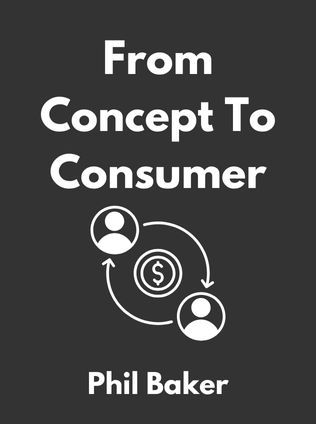
From Concept To Consumer
How to Turn Ideas Into Money
By Phil Baker
Published 10/2008
About the Author
Phil Baker is a renowned product developer with over 30 years of experience in the industry. Throughout his illustrious career, he has played key roles in developing flagship technologies and products for numerous companies, including Apple, Seiko, Polaroid, and Atari. Baker co-founded Think Outside and serves as a consultant for U.S. and Asian product, business, and market development. He also writes the technology column for the San Diego Daily Transcript. His extensive expertise in product development is encapsulated in his book From Concept to Consumer, where he shares invaluable insights on transforming ideas into successful products.
Main Idea
From Concept to Consumer elucidates that a great idea accounts for only a small fraction of success in product development. According to Baker, "an idea is just 5 percent of what makes a product successful." The book emphasizes the importance of various factors, such as timing, pricing, marketing, and distribution, in achieving success. Baker provides a comprehensive guide on navigating the development process, making critical decisions, and leveraging external resources to bring a product to market effectively.
Table of Contents
- New World, New Rules
- Just Do It
- The Basics of Development
- Industrial Design Matters
- Why Outsource?
- Selecting and Working with an Asian Partner
- The Marketing Component
- Distribution: Getting Your Product to the Consumer
- Top 10 Rules for Taking a Product from Concept to Consumer
- Legal Advice: Knowing When to Ignore It
- Now What?
New World, New Rules
The journey from concept to consumer has dramatically changed over the past decade. Product life cycles have shortened from years to months, and manufacturing has shifted from local to global. Distribution channels have moved to the internet and big-box stores. Today, companies must work at a frantic pace, with all disciplines collaborating from the outset. The key to success lies in timely market entry, competitive pricing, and effective marketing and distribution strategies.
Organizing for Rapid Development
Small, focused teams are more effective than large organizations because they communicate better and make decisions quickly. An ideal team comprises five to ten people from key functional disciplines: engineering, industrial design, marketing, finance, and manufacturing. This approach ensures diverse resources to address almost any issue efficiently.
Leveraging Outside Resources
Leveraging external resources accelerates product development by allowing companies to focus on their core competencies. Using outside experts reduces the need for permanent resources and fixed overhead costs, facilitating easier expansion and contraction throughout the project. This applies to design, manufacturing, delivery, and sales processes.
Remembering That Less Is More
Deciding which features to include in a product can be challenging. While engineers may aim to surpass the competition with more features, simplicity often leads to better outcomes. Unnecessary features complicate usage, lengthen development time, increase costs, and require extensive testing and customer support.
Don't Get Hung Up with Perfection
A product does not need to be perfect before going to market. It should be reliable, functional, and of high manufacturing quality. Real-world usage provides valuable feedback for refinements. Companies should offer liberal return policies for early adopters and provide discounts or trade-ins on future upgraded models to maintain customer satisfaction and advocacy.
Sign up for FREE and get access to 1,400+ books summaries.
You May Also Like
The Lean Startup
How Today's Entrepreneurs Use Continuous Innovation to Create Radically Successful Businesses
By Eric RiesWho Moved My Cheese?
An Amazing Way to Deal with Change in Your Work and in Your Life
By Spencer Johnson, M.D.Make Your Bed
Little Things That Can Change Your Life...And Maybe the World
By William H. McRavenThe Ride of a Lifetime
Lessons Learned from 15 Years as CEO of the Walt Disney Company
By Robert Iger



















